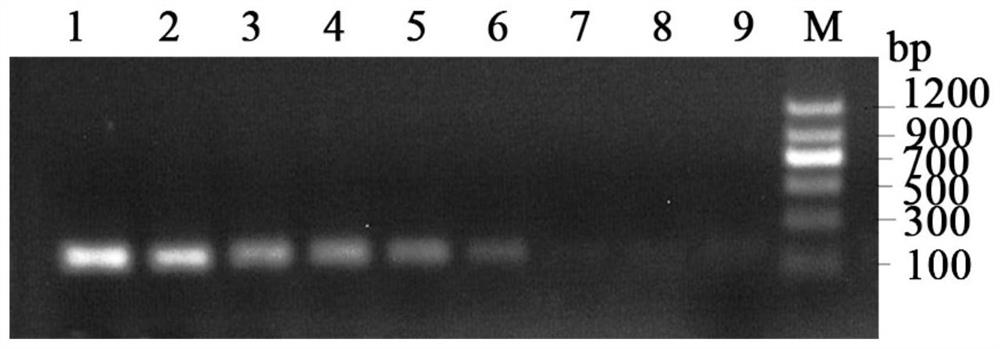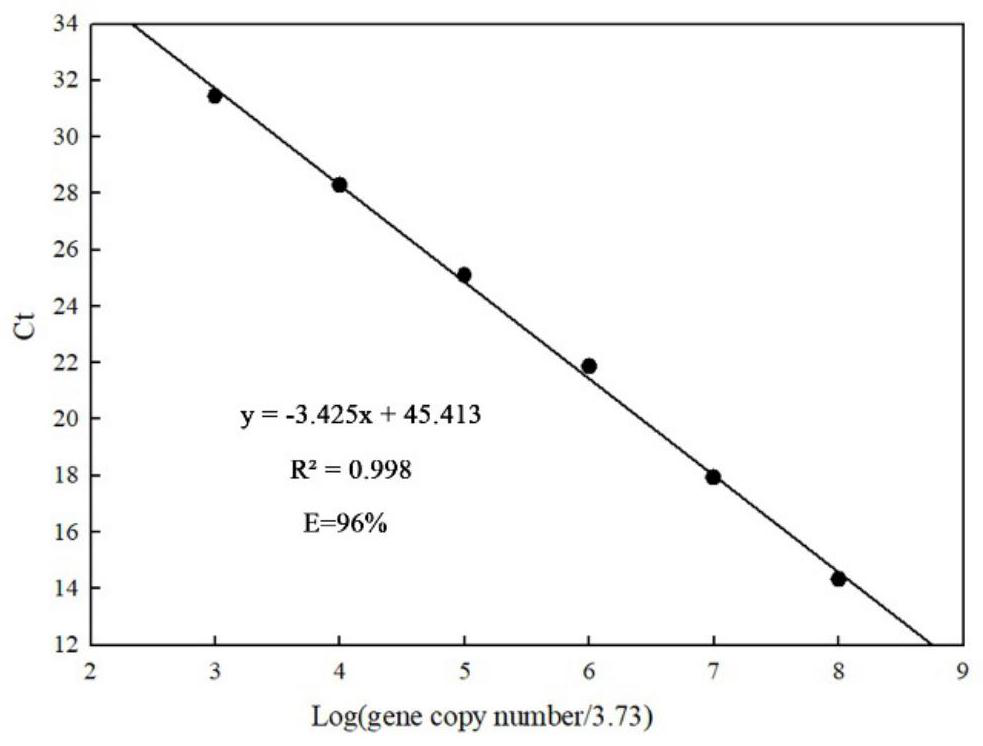Primer and method for quantitatively detecting turnip mosaic virus (TuMV) in limonium sinuatum
A technology for quantitative detection of turnip mosaic virus, which is applied in biochemical equipment and methods, microorganism-based methods, and microbial determination/inspection, etc., can solve the problems of cumbersome operation, low sensitivity, complicated operation, etc. Sexual, high-sensitivity effects
- Summary
- Abstract
- Description
- Claims
- Application Information
AI Technical Summary
Problems solved by technology
Method used
Image
Examples
Embodiment 1
[0039] In 2019, more than 50 samples of forget-me-not leaves infected with turnip mosaic virus (TuMV) were collected in the main planting area of forget-me-nots in Yunnan. Deformation, dwarfing, difficulty in blooming flower stems, etc. (see figure 2 ). 15 samples were randomly selected for testing.
[0040] Before the sample inspection, the TuMV CP gene sequences AB701704, KC119189 and AP017831 were screened in GenBank, and primers were designed in the conserved region of the gene. Design multiple pairs of primers on Premier 5.0, and select a pair of primers with the best effect and the most stability according to the results of multiple PCR experiments, namely: upstream primer TuMV-F:5'-CGACCATACATGCCACGACA-3', downstream primer TuMV -R: 5'-TCCATCCAAGCCGAACGAA-3', the size of the product amplified by this primer is 180bp.
[0041] Then, the general plant total RNA extraction kit was used to extract the RNA of the forget-me-not infected leaves, and then the RNA was reve...
PUM
 Login to View More
Login to View More Abstract
Description
Claims
Application Information
 Login to View More
Login to View More - R&D
- Intellectual Property
- Life Sciences
- Materials
- Tech Scout
- Unparalleled Data Quality
- Higher Quality Content
- 60% Fewer Hallucinations
Browse by: Latest US Patents, China's latest patents, Technical Efficacy Thesaurus, Application Domain, Technology Topic, Popular Technical Reports.
© 2025 PatSnap. All rights reserved.Legal|Privacy policy|Modern Slavery Act Transparency Statement|Sitemap|About US| Contact US: help@patsnap.com



